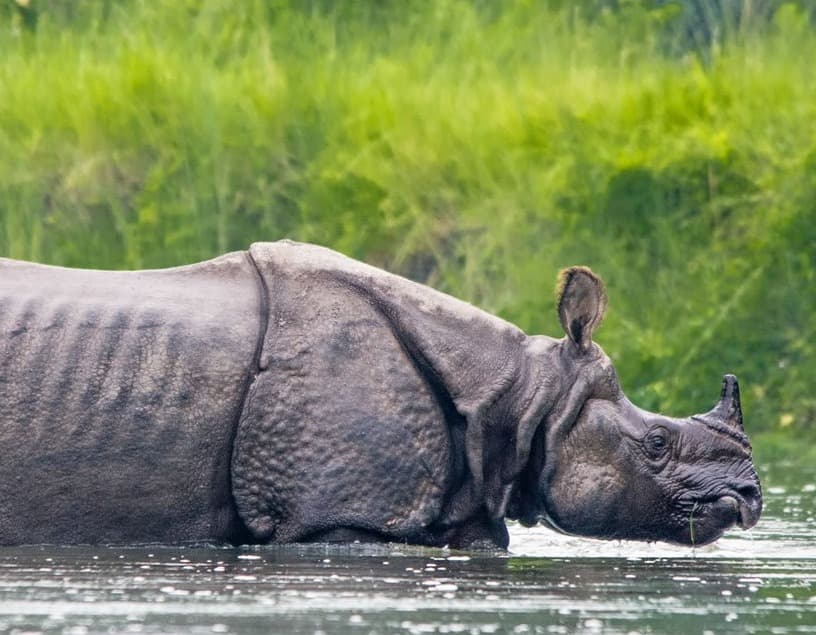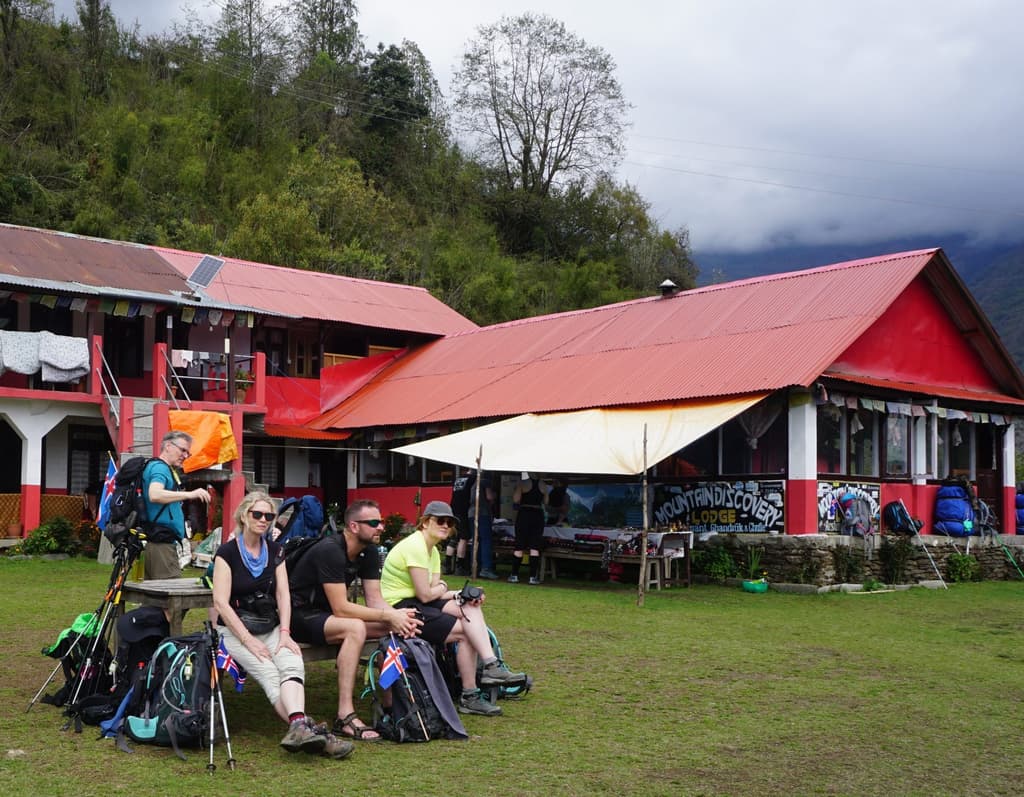In general, trekking in the Nepal Himalayas is not a cakewalk, and that too for a first-time trekker. It is fair that trekkers make silly mistakes because it is their first time, and do not know how things work. But in excitement, most tend to overdo it. While overdoing does not necessarily lead to harm, but some can prove to be expensive for you. In recent times, trekking has become mainstream. Everyone wants to go to the hill, take stunning pictures, and post on Social media platforms. Hence most act impulsively and later come to regret the decision and entirely despise trekking. And this is altogether wrong.
Going on a trek is not something you can do with one or two-day planning. Planning a trek in Nepal at least takes a month of preparation if you are a rookie trekker. Similarly, it takes immense physical and mental strength apart from firm determination. So in this blog, we highlight some of the mistakes first-time trekkers make and ways to avoid them:
Not researching enough about trek grade level
As said earlier, some newbie trekkers act on influence; therefore, they see a picture and popularity around it and decide they also want to go there. It is nice to decide to go on a trekking adventure since it is positively impactful in every way. But if you go without doing a prior and complete study of the place, then the only difficulty is waiting for you.
Trekking is not about reaching a destination. It is about the trekking path, how one can approach without incurring any physical accidents, and is the spot really meaningful for you or not. In trekking scenarios, most trekkers walk the trail because it means something to them. Be it the culture of the trekking region or the area in general, most walk the mountains with some goals. Hence, most first-time trekkers fail to study about the trekking grade level.
Therefore, it is very important trekkers do thorough research about the journey before they start the trek. It is crucial they know if the maximum altitude of the journey is too high for them or if they can walk for hours to finish the trip on time. Furthermore, if you are a first-time trekker, start with an easy and mild trekking journey before going on a long, arduous trek. Likewise, do complete research about the trail you are planning on going. Knowing the terrain of the path helps build an exercise plan for the trek. Similarly, while choosing the trek, don’t be fooled by easy or short labels. Since you are a first-time trekker, consider easy-tagged hikes also as challenging treks.
Bringing more than the necessary
Heavy trekking bags are the other mistakes that first-time trekkers usually make. And it is completely understandable too. Because mountains are remote and hence trekkers want to be resourceful. But, the matter is not about bringing all the things on the trek. There are some things which we probably use in our daily life but are not totally important. For instance, first-time trekkers make the mistake of bringing varieties of toiletries and unnecessary trekking gear.
Hence, what first-time trekkers need to understand is they need to pack as per their trekking days. At least in terms of trekking clothes. Similarly, they do not have to bring all the toiletries because most of them are available to purchase on the trail. Likewise, in terms of clothing, pack as per the season. What most rookie trekkers are unaware of is that they can buy gears suitable depending upon the season. And they end up wearing multiple layers and discomforting themselves.
With that said, make a list of things before packing your bag. Also, try to make your bag as light as you can. But in the process, don’t remove the items necessary to you.
Wearing multiple layers
As said earlier, wearing multiple layers is what many newbie trekkers do. One can avoid making such mistakes by carrying 3-5 layers of clothes depending upon the number of days you are trekking and season. Similarly, make sure your layers are light, not made of cotton fabric, and dries faster. Polyester materials and clothes work better for trekking. Similarly, make sure not only are these clothes warm but also comfortable. Warm clothes are presumably crucial while trekking in the mountains of Nepal because the weather changes frequently. And proper clothing helps trekkers from getting affected by chill and crisp mountain air. Overall, only purchase the gears suitable for the season you are traveling and dries faster for a smooth trekking experience.
Trekking on a normal shoes
Trekking in the rugged lands of Nepal in regular jogging or running shoes is possible but not comfortable. Nepal’s trekking trail entails doing frequent ups and downs on the rough and rugged terrain. As much as jogging shoes are usable during trekking, their sole is not thick enough to not make your feet uncomfortable. Invest in good trekking shoes. Because their soles are wide, have good grip, and keep your feet comfortable as much as possible. Also, it would be much better if they are waterproof to be suitable for all seasons.
Additionally, even if you are going on a week-long trek journey, remember, you will be walking for long hours. And trekking involves long, vigorous walks in the wild natural environment. So having comfortable, light and shoes with good grip are very important for a pleasant journey.
Trying to alternate the trek
It is not common amongst rookie trekkers, but the problem still persists. It is nice to follow alternative trek routes but only when it is necessary. However, some try to change the way because their friend followed the trail. Or it is supposedly a less crowded trail. On that note, what rookie trekkers need to know is that there are several routes excluding standard trek routes for the same destination. And most trek leaders follow the standard route and only change to alternative routes when the primary way is blocked.
Similarly, taking alternatives is not always safe because those trails usually do not have proper touristic infrastructures. Additionally, human settlements are thin, which is not good while trekking in the remote mountains. Therefore, sticking to an approved itinerary is best for everybody.
Not following the trekking leader’s instructions
One thing first-time trekkers need to understand is that Nepal’s trekking trails are different. These paths are rigorous, rough, jagged, narrow, steep, and slippery. Hikers have to be very careful while approaching the journey. Similarly, not only are these paths rough, they are located in one of the most incredible heights. Hence, as much as being careful is essential, accommodating the surrounding is also crucial. If not adjusted correctly, there is a high chance of suffering from mountain sickness. This is why trekkers have to carefully follow the instructions of the trek leader on the trail. They are most familiar with the route and know how to handle unforeseen accidents. Besides, they know how to tackle the difficulties that these mountains can throw at us. It is essential to share your conditions and listen to trek leaders on the trek for a beautiful vacation.
Becomes victims of fake deals and offers
Who doesn’t love good deals and offers? But how many are capable of recognizing lewd schemes behind attractive deals. Not many! And most first-time trekkers have become victims of it as well. Regardless of their naivetés, there are various ways rookies trekkers can avoid making the mistake of falling for fake deals and offers. Firstly, see who is offering such deals, their accreditations, are they a recognized company, what do such deals entail, and what do they do not cover.
Similarly, compare the lowest price with the highest price so that you can get the best deals without imposing any loss. On this day, people can quickly become pawns of fake offers. But one must be smart enough to know if such offers are even valid and reasonable. So beware of counterfeit deals and offers if you are thinking of booking a nice trekking escape.
Negligence regarding food and water
Foods give you energy so that trekkers can have that much-needed strength to move forward on the journey. Meanwhile, water helps to keep the body hydrated and helps in evading mountain sickness. But most first-time trekkers forget they are in the mountain, and they are constantly burning their calories. Therefore, consuming snacks and water frequently is necessary. Similarly, skipping meals such as breakfast, lunch, and dinner is bad when trekking in the mountains. Do not skip even one meal. Have all the meals and also routinely keep eating energy bars and chocolates for energy. Then again, don’t drink water only when you are thirsty. Try mixing pure water and a sports drink containing electrolytes for various purposes. This keeps fluids, keeps the energy, balances electrical levels, and makes walking easier. Learn foods you can expect during the trek
Last Words
These are some common mistakes first-time trekkers make while trekking in Nepal. But these mistakes are entirely avoidable. Follow the expert tips given above if you plan a trek for the first time in your life. These will definitely help you in having a successful hike and a feeling of excitement in nature. Make sure you correctly follow these tips at least to achieve optimum advantages.



Post a Comment